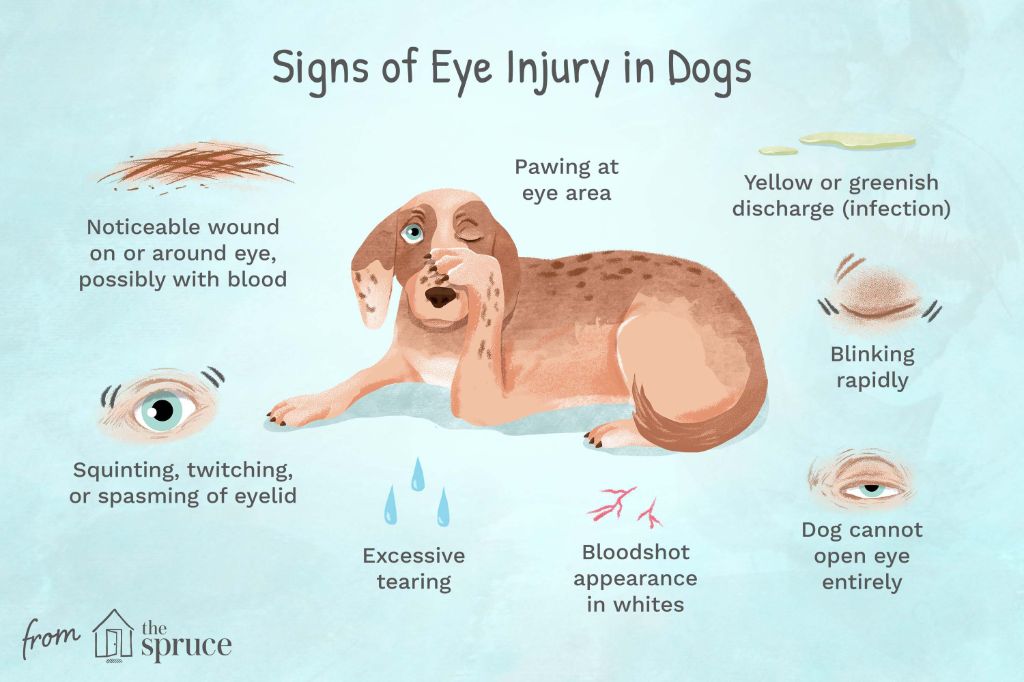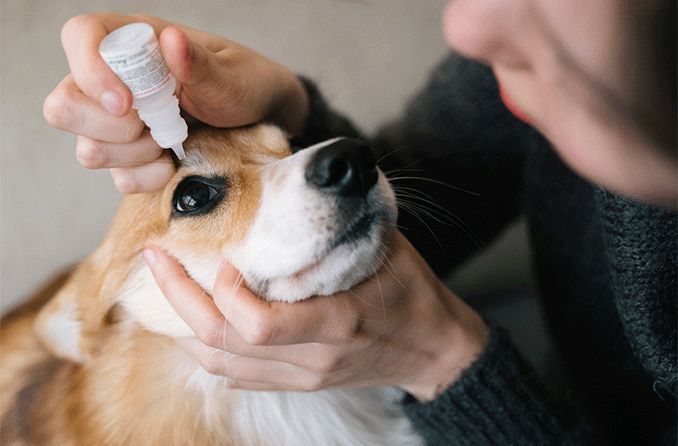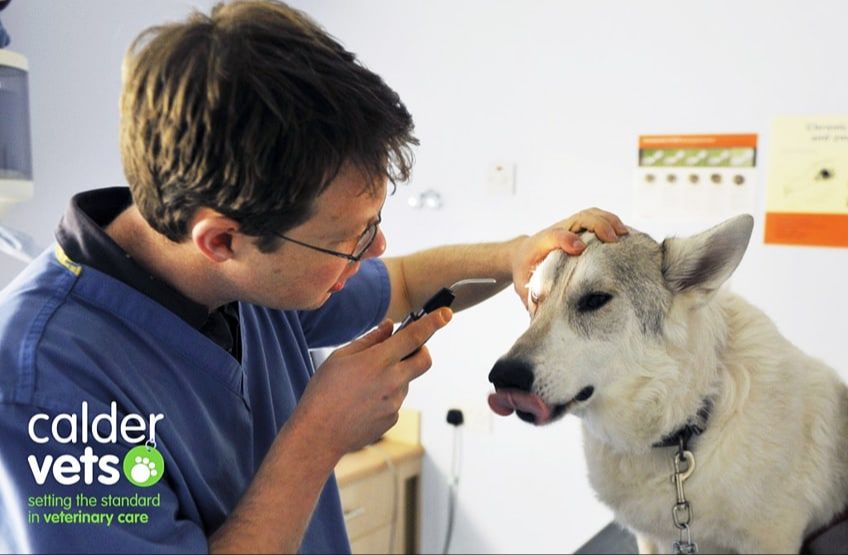Introduction
Unilateral squinting, where a dog squints or blinks only one eye, can be alarming for pet owners. Though it may seem like a minor issue, a dog squinting one eye can actually signal an underlying health problem. Knowing the causes, symptoms, diagnosis and treatments for unilateral squinting is key to getting your dog the right veterinary care. This guide covers everything owners should know about dogs squinting one eye with no discharge.
Causes of Unilateral Squinting
There are several potential causes for a dog to squint or keep one eye closed without discharge:
Corneal injury such as a scratch or ulcer on the surface of the eye is a very common cause of a dog squinting one eye. According to emergency-vets.com, “These types of wounds are called corneal ulcers, and are a very common cause for squinting and discomfort in dogs.”

Glaucoma, increased pressure within the eye, can lead to pain and squinting in one eye. Glaucoma is a serious condition that requires prompt veterinary attention to prevent permanent damage and blindness.
Infection of the eye or adnexa, such as conjunctivitis, can cause unilateral swelling, irritation, and squinting. Infections require medication and sometimes flushing of the eye by a veterinarian.
Horner’s syndrome, where one eyelid droops due to nerve damage, can make a dog appear to be squinting on just one side. Additional symptoms like a constricted pupil and droopy ear may be present.
Foreign material within the eye, like an eyelash, seed, or foxtail awn, leads to squinting and discomfort until it can be removed.
Dry eye, or keratoconjunctivitis sicca (KCS), results in insufficient tear production leaving the eye chronically dry. Dogs may squint due to irritation and sensitivity from lack of lubrication.
Symptoms
Some of the most common symptoms of a dog squinting or blinking one eye include:

- Excessive squinting or blinking of one eye
- Keeping the eye closed or only partially open
- Redness in the eye or eyelid
- Swelling around the eye
- Discharge or tearing from the eye
- The third eyelid being visible
- Rubbing or pawing at the eye
- Sensitivity to light
Dogs may also act hesitant to move around or be touched around the head if they are experiencing eye discomfort or pain. Changes in behavior like irritability or depression can sometimes accompany eye issues as well.
If you notice any of these signs, especially if they occur suddenly and seem to affect just one eye, it is important to have your dog seen by a veterinarian as soon as possible. Rapid treatment can help prevent permanent damage and vision loss.
Diagnosis
If a dog is squinting or showing other symptoms of eye issues like discharge or irritation, the first step is to take them to the veterinarian for a full examination. The vet will perform a comprehensive physical exam and eye exam to check for any abnormalities.
Some of the diagnostic tests the vet may use include:
- Fluorescein eye stain test – This involves putting a special fluorescent dye into the eye that adheres to any scratches or ulcers on the cornea. These damaged areas will glow green under a special light.
- Schirmer tear test – Strips of special paper are placed under the eyelid to measure tear production. Decreased tear production can indicate dry eye.
- Tonometry – An instrument called a tonometer measures pressure inside the eye to check for glaucoma.
- Ophthalmoscopy – The vet will use an ophthalmoscope to examine inside the eye, including the retina and optic nerve.
- Bacterial culture – Swabs may be taken from the eye to identify any bacterial infections.
Testing and diagnosis will identify the underlying cause leading to squinting such as corneal ulcers, glaucoma, uveitis, dry eye, foreign bodies, and other eye diseases (vetster.com). The earlier the cause is found, the quicker treatment can begin.
Treatment
The treatment for a dog squinting one eye depends on the underlying cause. Some common treatment methods include:
Addressing the underlying cause – If an infection, foreign object, or other issue is causing the squinting, the vet will prescribe treatment specific to that condition. For example, antibiotics for infections or removal of foreign bodies.

Eye drops – Vets often prescribe antibiotic, anti-inflammatory, or lubricating eye drops to treat eye conditions causing squinting. These can help fight infections, reduce swelling/irritation, and keep the eye moisturized.Source
Surgery – If an eye condition like glaucoma or a corneal ulcer is not responsive to other treatments, surgery may be required. This can involve procedures to relieve pressure in the eye or repair damage to the cornea.Source
The vet will determine the best treatment approach based on the specific cause and severity of the dog’s condition. Quick treatment is important to prevent permanent vision damage in the squinting eye.
Home Care
If your dog is squinting one eye with no discharge, there are some home care steps you can take while monitoring your dog’s condition or waiting for a veterinary appointment:
Keep the eye clean. Use a damp, soft cloth to gently wipe away any discharge or debris around the eye. Do not rub the eye itself. You can also use a sterile saline eye wash to flush the eye if instructed by your veterinarian.
Monitor for any changes. Watch for increased redness, swelling, discharge or additional squinting or rubbing of the eye. These could indicate a worsening problem. Also monitor for any changes in pupil size.
Follow veterinary advice. Your vet may prescribe eye drops, ointments or other medication to help treat the underlying cause. Carefully follow all label instructions and finish the entire course of treatment. Restrict activity if recommended.
Do not attempt to remove any foreign objects stuck in the eye yourself. Seek veterinary care for proper eye injury treatment and pain management.
Avoid home remedies or human eye medications, as these could inadvertently cause further injury. Work closely with your veterinarian for the safest home care while your dog’s eye heals.
Prognosis
The prognosis for a dog squinting one eye depends on the underlying cause. With prompt veterinary care and appropriate treatment, the prognosis is generally good. Some specific conditions like glaucoma or corneal ulcers can lead to blindness if left untreated, so it’s important to have a veterinary examination done quickly.
For mild irritation or eye infections like conjunctivitis, the prognosis is excellent with medication. Corneal abrasions and ulcers usually heal well when treated, with antibiotics and medications to relieve pain and promote healing. Glaucoma can be managed if caught early, but may eventually lead to blindness without treatment. The prognosis is best when the underlying cause is identified and addressed.
Overall, with veterinary oversight and following treatment recommendations, most causes of uniocular squinting and discharge can be resolved fully. Catching the condition early and managing any subsequent complications gives the best prognosis. Regular eye health checks, especially for predisposed breeds, assists with early detection and optimal outcomes. With appropriate care, dogs with uniocular squinting can live long and healthy lives.
Prevention
There are some steps pet owners can take to help prevent their dog from developing a squinting eye condition:
Avoid eye injuries. Be careful of activities that could poke your dog’s eye like playing fetch with sticks or letting your dog hang their head out the window of a moving car. Use goggles or eye shields when appropriate. Keep household chemicals properly stored and out of reach.
Monitor eye health. Check your dog’s eyes regularly for any signs of redness, discharge, swelling or irritation. Be alert for any squinting or pawing at the eyes.

Routine vet exams. Have your veterinarian examine your dog’s eyes at wellness checkups and ask about recommended eye health screening tests. Early detection of issues like glaucoma or cataracts allows for better management.
Keeping your dog’s eyes safe and getting veterinary care when needed can help avoid more serious vision issues from developing down the line. Be proactive about prevention through monitoring, avoiding injury risks and regular vet visits.
When to See a Vet
If your dog is squinting or blinking excessively in one eye for over 24 hours, it’s a good idea to have them seen by a veterinarian. Prolonged squinting or blinking can indicate an underlying eye problem that requires treatment. Some signs that warrant a veterinary visit include:
- Squinting that lasts for more than a day
- Redness, swelling or discharge coming from the eye
- Rubbing or pawing at the eye
- Cloudiness in the cornea
- Tearing or watery eyes
- The eye appears painful or your dog cries when you try to open the eyelids
According to the experts at Kingsdale Veterinary Hospital, “You should seek veterinary attention immediately if your dog experiences a sudden onset of squinting and rubbing at one eye.”
It’s important to have your veterinarian examine your dog’s eye to determine the underlying cause of the squinting. Leaving eye problems untreated can lead to permanent damage or vision loss. The sooner you can get a diagnosis, the better chance you have of resolving the issue before it gets worse.
Conclusion
In summary, unilateral squinting in dogs, where one eye appears closed or narrowed, can have several potential causes. It may be the result of a problem with the eye itself, an issue with the muscles controlling eye movement, or a neurological condition. Diagnosing the specific cause involves a veterinary exam and possible diagnostic testing. Treatment depends on the underlying cause but may include eye drops, surgery, or medication. While unilateral squinting often resolves with treatment, some dogs may have permanent visual deficits. Home care like applying eye drops and keeping the eye lubricated can provide comfort. Preventing injuries and infections through vigilance and veterinary care helps avoid conditions that can lead to a squinting eye. Contact your vet promptly if your dog develops a squinting eye to get proper diagnosis and care. With treatment guided by a veterinarian, many dogs with a temporarily squinting eye can make a full recovery.